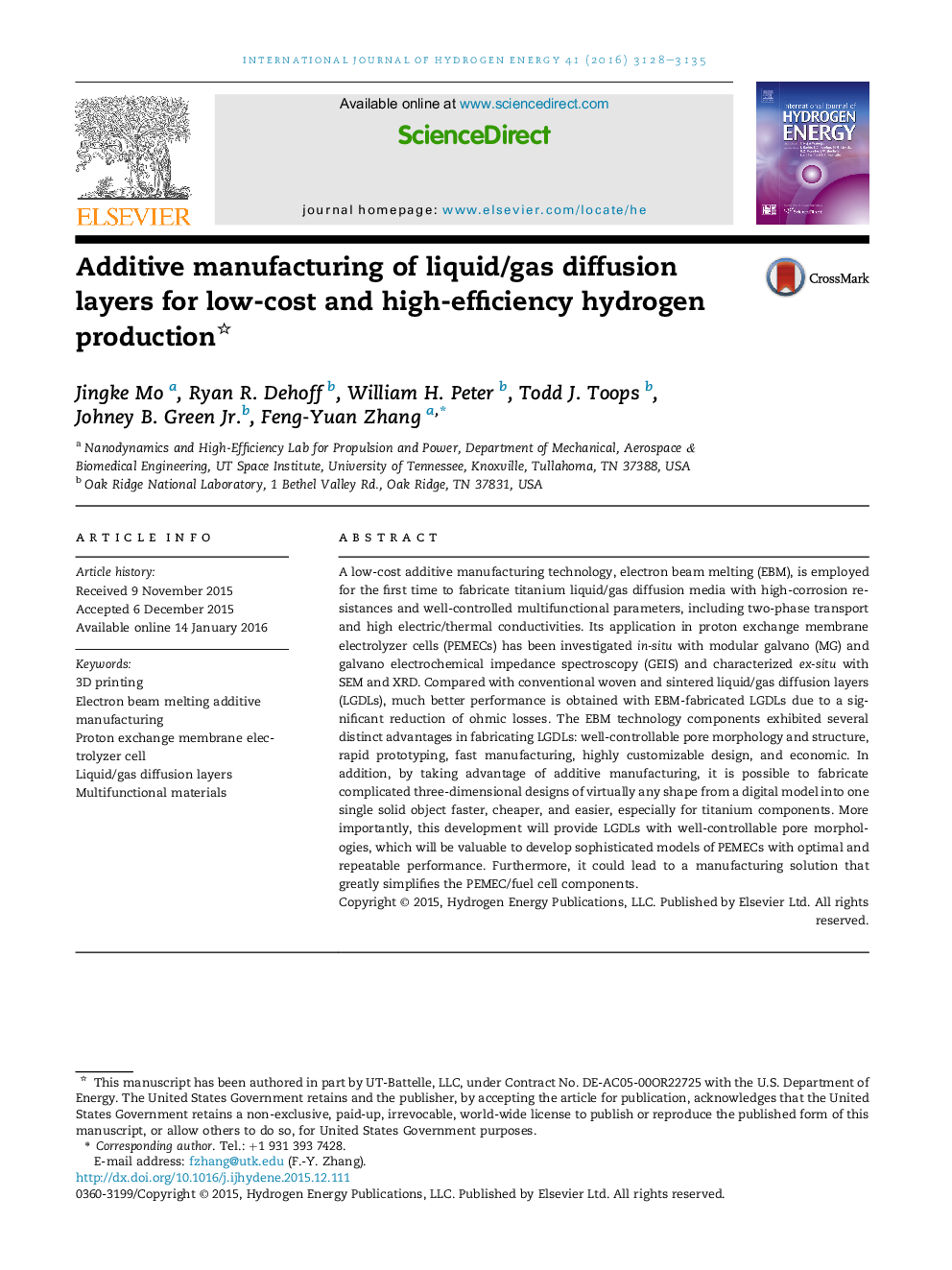| Article ID | Journal | Published Year | Pages | File Type |
|---|---|---|---|---|
| 7712559 | International Journal of Hydrogen Energy | 2016 | 8 Pages |
Abstract
A low-cost additive manufacturing technology, electron beam melting (EBM), is employed for the first time to fabricate titanium liquid/gas diffusion media with high-corrosion resistances and well-controlled multifunctional parameters, including two-phase transport and high electric/thermal conductivities. Its application in proton exchange membrane electrolyzer cells (PEMECs) has been investigated in-situ with modular galvano (MG) and galvano electrochemical impedance spectroscopy (GEIS) and characterized ex-situ with SEM and XRD. Compared with conventional woven and sintered liquid/gas diffusion layers (LGDLs), much better performance is obtained with EBM-fabricated LGDLs due to a significant reduction of ohmic losses. The EBM technology components exhibited several distinct advantages in fabricating LGDLs: well-controllable pore morphology and structure, rapid prototyping, fast manufacturing, highly customizable design, and economic. In addition, by taking advantage of additive manufacturing, it is possible to fabricate complicated three-dimensional designs of virtually any shape from a digital model into one single solid object faster, cheaper, and easier, especially for titanium components. More importantly, this development will provide LGDLs with well-controllable pore morphologies, which will be valuable to develop sophisticated models of PEMECs with optimal and repeatable performance. Furthermore, it could lead to a manufacturing solution that greatly simplifies the PEMEC/fuel cell components.
Keywords
Related Topics
Physical Sciences and Engineering
Chemistry
Electrochemistry
Authors
Jingke Mo, Ryan R. Dehoff, William H. Peter, Todd J. Toops, Johney B. Jr., Feng-Yuan Zhang,
